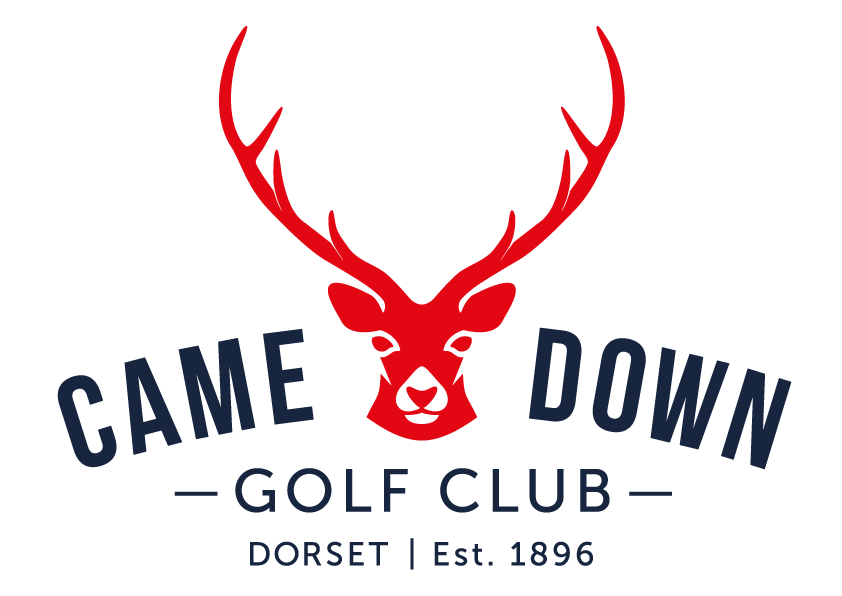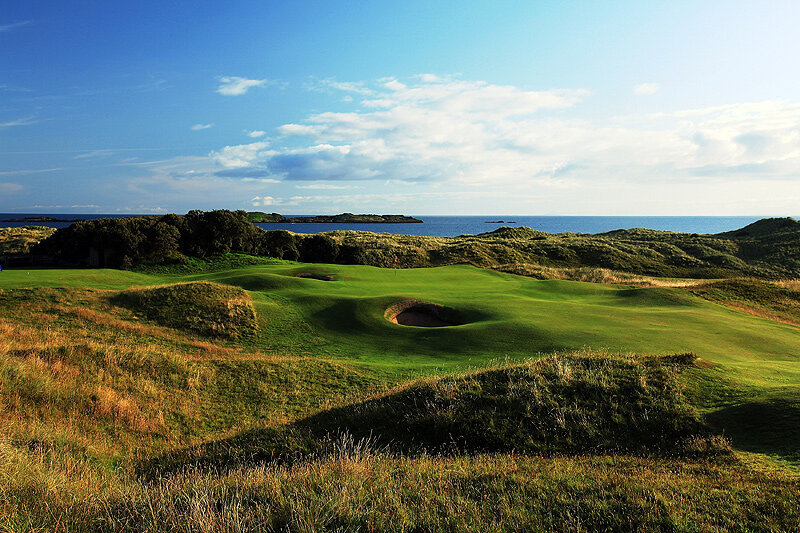About Came Down Golf Club
Providing a friendly welcome for members and visiting players of all ages, Came Down has been a popular golf course in West Dorset since 1896. Our downland course, prepared with the greatest care and attention to detail, is nestled beautifully between Dorset's historic county town, Dorchester and the coastal resort of Weymouth - offering stunning 360-degree views and a spectacular course that is open all year round.
We are easily accessible, situated between Dorchester and Weymouth, just 3 miles off the main A35. Both towns have direct train lines from London, Bristol and Gloucester and are perfect locations to stop over, for those looking for a golf break in Dorset.
The course is challenging but playable for all golfers. Our fairways are generous, affording golfers the opportunity to open their shoulders off the tee, however, shots can quickly disappear if our fast, sloping, greens aren't accessed from the correct angle. The course measures 6218 yards from the yellow tees and 6471 yards off the whites. The free-draining course sits on a chalk base making it playable all year round and is lovingly maintained to a high standard by our experienced team of greenkeepers.
Practice facilities are available, as are buggy and trolley hire. Additionally, we have golf lessons available with our PGA professionals - for those looking to pick up a golf club for the first time or improve their swing.
Visitors and societies are very welcome 7 days a week, year-round, and do keep an eye out for our popular Open Competitions on our website.
Our clubhouse has been recently refurbished and can accommodate sizeable groups – ideal for large social, charity, or corporate golf days. Relax after your round in our spacious bar and restaurant which enjoys spectacular views of the course or have a drink on our terrace, watching the sun go down over nearby Dorchester. Our attentive helpful staff will cater for your needs while our chef prepares you a delicious meal from our extensive menu.
View Came Down Golf Club
A History of Came Down Golf Club
In the Beginning
Came Down Golf Club has strong historical links to some of golf’s most important institutions and history, including The R&A, The Ryder Cup, The Open, Harry Colt and even the origin of ‘The Bogey’!
Tom Dunn, who designed the original 9-hole course
Founded in 1896 as the Dorchester Golf Club, our club’s inception was part of the great golf boom of the 1890’s where every town seemed to want its own golf course.
On January 25th 1896 the Southern Times had announced the formation of the Dorchester Golf Club. Colonel Tweedie, the newly appointed Honorary Secretary stated “the committee will be pleased to receive the names of those desirous of becoming members.”
The course was initially 9 holes and some of our most prestigious trophies, still played for every year, date from these beginnings – The South Court Cup, 1897; The Bogey Cup, 1905; The Challenge Bowl, 1905.
In 1904 our first links with The Open were forged. J H Taylor, a five times Open Champion, was engaged to extend the course to 18 holes. Part funded by Weymouth, the Club was renamed the Dorchester, Weymouth and County Golf Club. In recognition, that town presented the club with the Weymouth Cup. This trophy is still the most prized in the club after over 100 years of competitions.
By 1924, members wanted improvements to their course and a simpler name. The club was renamed Came Down Golf Club and the renowned architect Harry S Colt was engaged to remodel the course.
And the link to Bogey and the R&A? Our club captain in 1910 was Dr Thomas Browne, RN, who is famous in golf for introducing the word “Bogey” in to the golfing vocabulary. The Club Captain for the following year was Angus Hambro, an English International, who went on to become Captain of the R&A at St Andrews in 1928-1929. Hambro was invited to captain the British team in the first ever Walker Cup but his official duties prevented him from accepting.
An announcement of the club’s formation, in the Southern Times, 25th January 1896
The old clubhouse
The J H Taylor Story
In 1904, Weymouth, like so many towns around Britain, decided they needed a golf course to make the town more attractive to visitors. They hired J H Taylor to find the best location to build the course.
Royal Porthcawl
Royal Birkdale
J H Taylor was a giant in the golfing world at the time. Before the First World War he won The Open five times. Over the course of his career, he competed at The Open from 1893 (aged 22) to 1924 (aged 55). He won twice at St Andrews and also at Royal St George’s, Royal Cinque Ports and Royal Liverpool. He, together with Harry Vardon (six Open wins) and James Braid (five Open wins) were collectively known as the “Great Triumvirate” of golf.
Taylor designed over 100 courses, amongst them, Royal Birkdale, Royal Dornoch and Royal Porthcawl.
Not long after commencing his search for a suitable site for a Weymouth course, Taylor reported that he considered that there was nowhere suitable south of the Ridgeway, but the 9 hole Dorchester Golf Club showed great promise and could be extended into a great 18 hole course. Reluctantly, Weymouth accepted.
On the opening day of his new course, 15th May 1906, Taylor brought his great rival James Braid to Came Down for an exhibition match. The two Open Champions played an 18 hole Exhibition match, with Taylor finishing triumphant with a score of 79.
The course was played on these 18 holes until the next great designer was summoned to Came Down – Harry S Colt.
J.H. Taylor, who won the Open five times, redesigned the course in 1904-1906, adding another 9 holes.
A Harry Colt Course
Harry Shapland Colt is one of the most famous course designers of the 20th Century. Colt is responsible for some of the world’s greatest courses and in 1927 he brought his genius to Came Down.
Royal Portrush
Came Down is in very illustrious company with its links to Colt. Colt’s designs include three of The Open venues – Royal Liverpool, Muirfield, and Royal Portrush as well as Sunningdale, Woodhall Spa and Hoylake. Colt also designed the famous Pine Valley in the USA, recognised as one of the greatest courses anywhere in the world.
Royal Liverpool
Colt is famous for using the natural landscape as much as possible and he instantly saw the scope at Came Down with its tumuli, pits and slopes.
Our Par 3 12th is a classic Colt hole. Built into the side of a hill with the natural slope and carefully placed bunkers protecting any but the straightest of approaches it has all the hallmarks of his “risk and reward” philosophy.
Colt’s alterations have been largely untouched since and these have stood the test of time well. A good shot is rewarded while a poor shot can be severely punished on even the simplest holes.
Harry S Colt
The Whitcombe Brothers
An unrivalled family in golf, the Whitcombe Brothers include an Open Champion, Open runners-up, Ryder Cup players and Ryder Cup Captain – and all built from a base here at Came Down.
Reg, Open winner in 1938
The three Whitcombe brothers were Ernest, Charles and Reg. Born at Burnham & Berrow, they first lifted a golf club under the eye of the professional there – one J H Taylor. Came Down was pleased to welcome Ernest as the Club Professional in 1910. Not long after, their mother, Bessie, brought the two younger brothers to Came Down on becoming our new stewardess. She became famous locally for her fine cooking and her charm. Charles worked as Ernest’s assistant in the shop and Reg became apprenticed to Ernest.
They honed their games at Came Down and learnt how to handle the ball in the wind which went on to serve them so well later in their careers. Peter Lawless, author and golf journalist of the time, said, “Every morning early they were out, always with one club apiece, banging balls up to the flag. They would play a few holes with three clubs, the clubs being varied each day”.
The brothers all went on to become dominant golfers of the time competing and winning at the highest level. Between them they made eleven Ryder Cup appearances and in 1935 all three played in the same Ryder Cup team – something unlikely ever to be repeated. Charles was the Ryder Cup Captain in 1931, 1935, 1937 and 1949.
Reg was The Open Champion at Royal St George’s in 1938 and runner up to Henry Cotton in 1937. Ernest was runner up to Walter Hagen in 1924 and Charles was third at Muirfield in 1935.
The Whitcombe Brothers at the Ryder Cup in 1935
The Ryder Cup Story
Came Down played an important part in the founding of the Ryder Cup. Samuel Ryder was a member of Came Down Golf Club and played here regularly with Ernest Whitcombe, the club professional.
Abe Mitchell
The following is taken from Peter Fry’s book, Samuel Ryder, The Man Behind the Ryder Cup:
One day he (Samuel Ryder) asked Ernest Whitcombe if he ever played in the important golf tournaments. Ernest replied that he rarely did. If he was away, he wasn’t paid for those days by the club, and, he said “I’d probably have to walk there as the travel costs so much. The Americans come over here smartly dressed and backed by wealthy supporters, the Britisher has a poor chance compared to that.”
Ryder was taken aback by the contrast in treatment of talented golfers on either side of the Atlantic. He had a leading professional of the day, Abe Mitchell, as his own private coach, whom he often took to Came Down. In 1926, Ryder organised a match at Came Down between Abe Mitchell and Reg Whitcombe. The match drew national interest and was covered by Golf Illustrated at the time. After discussions with Mitchell and others on the poor support given to British professionals the idea grew for a contest between the best British and American Professionals. Samuel Ryder provided the trophy and the golfer on its now famous top is based on Abe Mitchell.
One consequence of the Ryder Cup was that British golf clubs provided greater support for their professionals in the hope of getting them onto the Ryder Cup team, thus giving the British professionals a more equal standing with their wealthy American colleagues.
In the words of Peter Alliss “It would appear that the Came Down Golf Club was the actual birthplace of the Ryder Cup”.
Samuel Ryder
Samuel Ryder presenting the trophy to winning captain, Great Britain's George Duncan at Moortown in Leeds in 1929
















